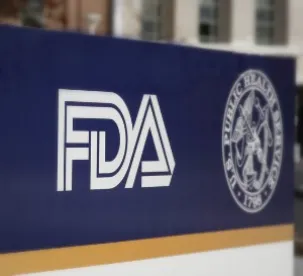What a year for the Food and Drug Administration! FDA, an agency with regulatory oversight of 20-25% of products on which consumers spend, including food and medicines, but which typically stays out of the limelight, was thrust into the public eye amidst the COVID-19 pandemic. This was the year many Americans became familiar with lesser-known and niche policies like those governing emergency use authorizations (EUAs) and with the role of FDA in regulating laboratory developed tests (LDTs). The agency also took some flak for seeming to bow to political pressure in authorizing hydroxychloroquine for emergency use as a potential COVID-19 treatment, then rescinding the authorization, as well as for its less-than-accurate pronouncements of positive data concerning convalescent plasma treatment. These were reminders that the agency Americans trust to protect the public does get things wrong sometimes and is susceptible in some ways to political pressure, and that effectively ensuring the public health requires a balance between safety and effectiveness and patient access to medical products. As we look ahead, we eagerly anticipate how FDA will protect and promote public health in a Biden administration.
In this post we’ll explore the FDA’s device law and policy activities from 2020. A future post will cover drug and biologics law and policy.
COVID-19 Diagnostics
FDA and the Centers for Disease Control and Prevention (CDC) received a lot of mostly negative attention early in the COVID-19 pandemic for well-documented (including by us) missteps related to testing. Since then, there has been a significant increase in the number of tests authorized by FDA for point-of-care (POC) uses in various patient-care settings such as clinics, emergency departments, physicians' offices, and outdoor or mobile COVID-19 testing sites. Additionally, some tests allow patients to collect samples at home, but those samples need to be sent to a lab for processing because there are no widely available FDA-authorized test kits to diagnose COVID-19 that can be used fully at home (i.e., for collection and processing). FDA did authorize a prescription test kit that allows for at-home collection and processing of samples to detect SARS-CoV-2 (the virus that causes COVID-19) in November 2020, but expectations are that it will not be available to the public until early 2021. And on December 9, the agency authorized the first non-prescription specimen collection kit, which the consumer then sends to a clinical lab for processing; should the lab’s testing results be positive or indeterminate, a physician contacts that consumer to advise him or her regarding next steps. Our prior posts go into great detail about the state of affairs of COVID-19 diagnostic testing; see here and here.
In addition to handling hundreds of EUAs relating to COVID-19 tests, FDA also developed a SARS-CoV-2 reference panel providing a standard baseline for test kit validation testing and began releasing performance testing results from manufacturers and clinical laboratories using the reference panel.
A key question remains: have COVID-19 testing capacity and capabilities advanced to the point of allowing the type of reopening of the country that many of us have desired since March? Sadly, our assessment is that while there have been impressive advances in COVID-19 diagnostic testing, we are still not seeing deployment of rapid, point-of-need tests that could be used at airports, stadia, or other public venues including many workplaces. Rather than testing, the Trump Administration’s focus has been on vaccines and other therapeutics.
Laboratory Developed Tests
In August 2020, the Department of Health and Human Services (HHS), in an unsigned statement posted on its website and not published in the Federal Register, barred FDA from requiring premarket review for any LDT, including those for COVID-19, unless FDA goes through formal rulemaking procedures. This was not terribly surprising because the Trump Administration’s posture toward regulating without clear authority (and sometimes even with it) had been well-understood as unwelcome. But the August action was simultaneously unsurprising and fairly insignificant because FDA had not been requiring LDT developers to submit their tests for premarket review and was deprioritizing review of EUA requests for COVID-19 LDTs in favor of traditional, kit-based in vitro diagnostics (IVDs) from commercial manufacturers.
Further, FDA has been a key partner to Congress and the laboratory community in designing a legislative framework for LDT oversight in recent years. That effort resulted in the introduction earlier this year of the Verifying Accurate and Leading-edge IVCT Development (VALID) Act, which we covered in prior posts, and which aims to reform the federal oversight regimes for both LDTs and IVDs. In November, the issue of FDA review of COVID-19 LDTs resurfaced again when HHS appeared to reverse itself by ordering FDA to review COVID-19 LDTs to assure that those tests could enjoy PREP Act protection.
From the events of this past year, it is clear that the regulatory framework and policies surrounding LDTs will be a prominent topic of debate in 2021. However, we expect there will be no quick resolution of these issues, either at a legislative or agency policy level, in the short term and that LDTs will likely remain in a gray area of FDA regulation and policy for the foreseeable future.
Digital Health
While COVID-19 is undoubtedly FDA’s top priority, the agency has taken actions to advance other policy and programmatic goals this year. In September, FDA announced the establishment of the Digital Health Center of Excellence, which is envisioned to be a multi-center effort for developing, coordinating, and implementing comprehensive, agency-wide digital health policies and programs. We explored this idea and noted some concerns in our previous post here. What’s important about this 2020 development is that, despite the current once-in-a-century public health emergency, FDA devoted what must be limited resources to laying the groundwork for the Digital Health Center of Excellence, suggesting that as we move into appropriations season and, perhaps more consequentially, the user fee negotiations, FDA will be prioritizing and seeking additional support for digital health.
510(k) & PMA Reform
In our 2019 year in review post for devices, we detailed significant proposed changes to the premarket notification (commonly known as “510(k)”) and premarket approval (PMA) pathways. With respect to 510(k)s, the optional Safety and Performance Based Pathway relies on comparisons of devices to criteria (like consensus standards) rather than the technological characteristics of a predicate device that is already on the market. The Safer Technologies Program builds on the Breakthrough Devices Program by enabling earlier and more frequent interactions with FDA for devices that may not meet the stringent breakthrough criteria, but which could still be beneficial for patients. FDA’s PMA proposal would allow a device to be marketed based on a demonstration of a reasonable assurance of safety only, with reasonable assurance of effectiveness needing to be demonstrated soon after marketing authorization (often referred to as “progressive” or “conditional” approval). This fairly substantial change to the PMA process would require Congress to amend the Federal Food, Drug, and Cosmetic Act.
Progress on implementing these proposals stalled due to the COVID-19 pandemic and two clouds now loom over them: the new administration and the question of which party will control the Senate. Senate Democrats have long been skeptical of FDA’s attempts to change the device regulatory model, fearing it is too industry-forward and lacks much-needed safety oversight. A new Biden-appointed FDA Commissioner may similarly be unenthusiastic about proposals that appear to make it easier to get products to market without thorough vetting. Pressure from a Democrat-controlled Congress on a Democratic administration would do little to help advance these proposals. FDA’s device program may, however, still benefit from a Democrat-controlled Senate in that Democrats may be more willing to fund the nascent National Evaluation System for health Technology (NEST), on which many of FDA’s plans for improved safety surveillance and premarket review rest. And we have yet to see the types of investments both Congress and industry will be making in the upcoming user fee reauthorization process.
Missed Deadlines
FDA’s Center for Devices and Radiological Health (CDRH), like other FDA organizational units, has statutory mandates, user fee commitments, and other self-imposed goals to meet, which include commitments to publish new regulations, make reports to Congress, draft or finalize guidance documents, and goals for completing premarket reviews for new medical devices. We have unfortunately seen CDRH miss some deadlines this year, which we hope is not a pattern of the center setting goals so lofty it cannot reasonably meet them, or of the center choosing to prioritize its own goals over those set by Congress.
For example, CDRH missed a statutory requirement in the 2017 Food and Drug Administration Reauthorization Act (FDARA) to issue a proposed regulation by August 2020 for over-the-counter (OTC) hearing aids. It has also repeatedly delayed publication of a draft guidance on the topic of medical device servicing and remanufacturing that has been on the priority guidance list since October 2018. The document appears on the FY 2021 priority guidance list as it did on the FY 2020 and FY 2019 lists, raising questions about whether it will actually be published this fiscal year. In addition, the center postponed a major guidance on clinical decision support software, which is also on the FY 2021 guidance priority list. CDRH also missed multiple deadlines over the past couple of years to issue a revised quality system regulation (QSR) that aligns with ISO 13485. While setting goals is, of course, the first step to achieving them, we wonder if FDA should take a (well-deserved, particularly in light of the extraordinary COVID-19 response effort) beat to catch up on some of these and other items before committing to more.
CDRH Director Jeff Shuren recently admitted that the diversion of FDA resources to processing EUA requests and creating policies and processes necessary to address the COVID-19 emergency did cause delays for many of the center’s other initiatives. Dr. Shuren has recently called for a reset in 2021 to refocus on CDRH’s priority projects, especially in the areas of digital health and 510(k) reform.
Stay tuned for our next post on FDA drug and biologics law and policy activities in 2020 and for more in 2021 on FDA activities related to COVID-19, user fees, and more.




 />i
/>i

